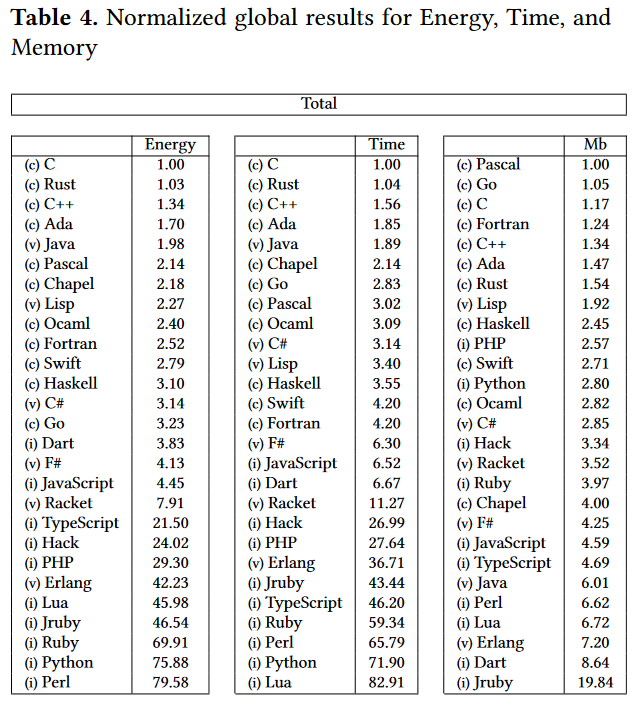Energy Efficient Programming Language
Recent developmet of information technologies leads us to drastic changes in our daily life in everywhere. Not only the eye-catching products based on AI (artificial intelligence) the supply chains over the world has been modernized in customer management, connection between manufacturers and consumers, and on-the-fly supplies tailored by clever systems. Behind the visible actions occuring in our demands the operation systems designed to show powerful functionality with low-energy usage are integrated in the apparatus or tools realizing the briliant ideas from industry and science.
The original article presented a comprehensive result by using 27 programming languages which are used in the contemporaries. The carefully monitoring showed how much electricity each one used — as well as its speed and memory usage.

More interestingly the article is dealing with the issues like:
- A faster language is always the most energy efficient?
- Is faster greener?
- The pros of compiled languages.
It is worth to address new results which could be available in the year 2021.
-
Comparison in energy consumption
Language Energy consumed Run-time C 57J 2019 ms Rust 59J 2103 ms C++ 77J 3155 ms Ada 98J 3740 ms Java 114J 3821 ms -
Comparison in memory requirement
Language Memory space needed Pascal 66Mb Go 69Mb C 77Mb Fortran 82Mb C++ 88Mb -
Comparison in the different paradigms
Language Energy consumed Run-time Imperative 125J 5585ms Object-Oriented 879J 32965ms Functional 1367J 42740ms Scripting 2320J 88322ms -
The complete set of results is available at International Conference on Software Language Engineering (SLE).